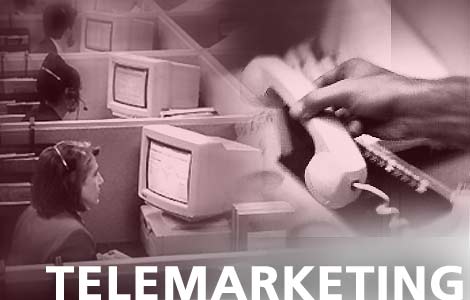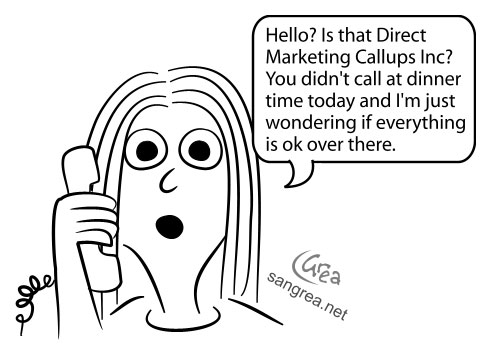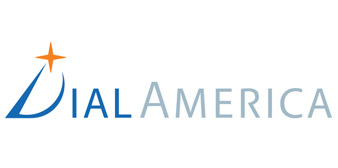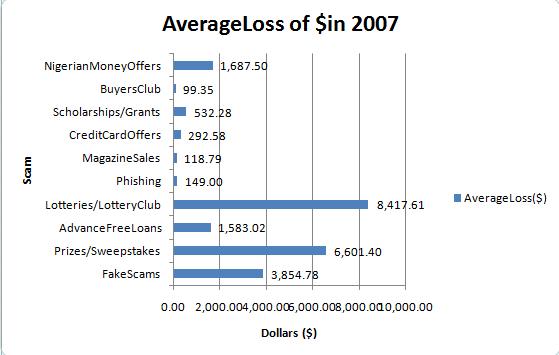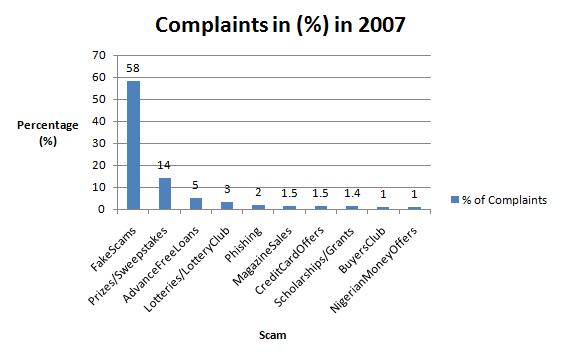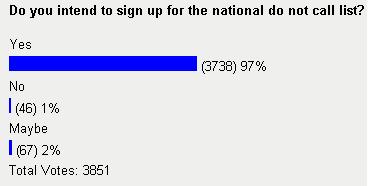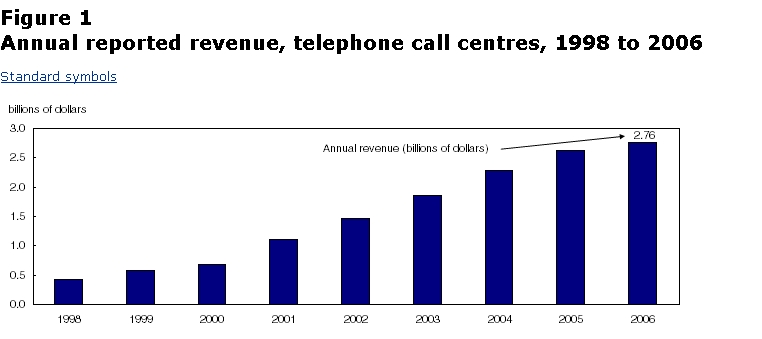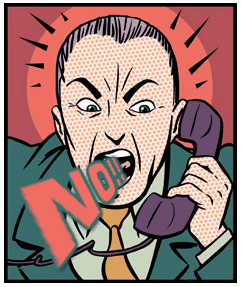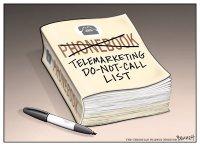Carson Rockhill, Sonal Sahel, Elif Zehir, Diane Ho, and Teegan Moore
Contents
Group Name
TELEMARKETINGTubbies
Group Members
Carson Rockhill
Sonal Sahel
Elif Zehir
Diane Ho
Teegan Moore
Group Member Contact Information:
Carson Rockhill - crockhil@ucalgary.ca
Sonal Sahel - ssahel@ucalgary.ca
Elif Zehir - ezehir@ucalgary.ca
Diane Ho - diho@ucalgary.ca
Teegan Moore - tmoore@ucalgary.ca
Technology & Issue
Technology: Telemarketing & The Do-Not-Call List
Issue: How to avoid unwanted telemarketing calls
Introduction/Initial Statement/Argument
History
The revolution of telemarketing began in the early 1900's. Companies realized the full capabilities of outbound telemarketing when Wide Area Telephone Service ("WATS")was invented in the 1960's. What is outbound telemarketing you may ask, outbound telemarketing occurs when those pesky telemarketing representatives initiate the contact (meaning they call you). On the other hand inbound telemarketing became popular in 1967, this occurs when you the customer contacts the representative patiently waiting to answer. Inbound telemarketing is accomplished via the use of advertisement and the media.
One of the oldest telemarketing companies known is called Dial America. Dial America originally operated as the company Life Circulation which was established in 1963, which campaigned to support local athletic teams. Life Circulation , changed its name to Dial America in 1967. The company has been growing ever since, working with over 300 magazine publications such as Readers Digest and People, banks such as Bank of America and GE Capital Bank and Internet Services like America Online.
Telemarketing grew exponential between the years of 1981-1991 . Just to give you a clear idea here are some simple statistics: -Between 1981 and 1991, spending on telemarketing efforts grew from $1 billion to $60 billion -In 1997 telemarketing sales, to consumers and businesses, totaled $425.5 billion.
Social Issue
Unfortunately, telemarketers can sometimes get the best of us whether we are aware of it or not. They are aggravating and bothersome and sometimes deceiving. If one decides to answer a telemarketer and is convinced to buy the product or service being offered, he or she may be a victim of fraud. Fraud can be an unfortunate outcome of telemarketing. Individuals and companies are robbed every year by criminals who are associated with telemarketing fraud. These criminals use the same techniques as a legitimate telemarketing companies which can be deceptive and even sometimes persuasive. Some types of telemarketing Fraud include:
1) Charity Schemes: This type of fraud can occur when a fraudulent telemarketer devises a scheme to raise money for a charitable cause. Usually people contribute to charity fundraisers because they feel that it is important and worth contributing to. Fraudulent telemarketers take advantage of these people, convincing them that their fundraiser is legitimate, but eventually robs them of their money. Some people don’t even realize that they have been scammed and continue to lose more money.
2) Credit Card, Credit-Repair and Loan Schemes: Credit card schemes include fraudulent telemarketers offering credit cards to people with low incomes and bad credit. When these victims decide to pay the fee demanded, they receive no card in the mail and end up losing the money they used to pay the fee. Credit Repair schemes occur when a telemarketer convinces an individual that any bankruptcies, judgments, liens or foreclosures and can removed. Loan Schemes are scenarios when a firm promises to give out a loan only if the consumer pays the fee in advance. Victim’s who pay this fee lose their money receive no loan.
3) Internet Related Schemes: Internet related schemes involve “spammed” emails that offer business investments or opportunities. The spammed email invites people to visit a particular website, or call a particular number to transfer funds to the “opportunity” or “business.”
4) Prize Promotion Schemes: These types of schemes convince individuals that he or she has won a valuable prize such as a free trip or a free car. These are false statements and show the intent of fraudulent telemarketers and criminals.
The data from these two graphs was taken in the United States of America during 2007
Source: http://www.fraud.org/telemarketing/2007telemarketing.pdf
In general, victims of fraud are usually exploited by fraud experts who take advantage of people’s vulnerability. Here are some tips that provide protection and security against fraud:
• When receiving any email, letter or phone call about winning a prize, make sure you actually submitted an entry and be skeptical and demanding for more information.
• If you are told that you won a lottery outside of Canada, hang up right away, since Canadians cannot win lotteries outside our national borders
• If a telemarketer requires you to pay any type of taxes for processing your prize/product, be cautious and concerned since cash and money orders cannot be traced which can lead to fraud.
• Ask for confirmation and documents that show if a company or telemarketer is legitimate before purchasing a product.
• If a person is calling on behalf of a charity, do some extra research to certify that they are a registered charity. You can check Revenue’s Canada database to see if the charity is registered.
Facts and Statistics
There are hundreds of thousands of companies that have turned to telemarketing as a way to communicate with the public, and to sell and promote products and services. In the past decade, telemarketing has become a crucial component and has brought in billions of dollars in sales. An example of this would be that there has been a 28% annual increase in the revenue of call centres from 1998 – 2006. In 1998 there were total revenues of $400 million and in 2006 there were total revenues of $2.8 billion! Telemarketing has also created over 155,000 jobs for Canadians in 2006, companies have spent over $4.1 billion on different forms of telemarketing and have generated over $26.1 billion dollars in sales.
There are also many negative aspects of telemarketing, one of them being that over 98% of Canadians say that telemarketing makes them “angry” and is said to be the most disturbing form of marketing. The Canadian Marketing Association was also forced to increase the amount of security at the front doors of their offices, due to the large amount of telemarketing complains. There is also a large problem with telemarketing frauds. Over 30% of victims of telemarketing frauds in North America are seniors. In 2006, Canadians were robbed up to $1 million due to telemarketing fraud.
A potential solution for the annoyance that occurs from telemarketing is a do-not-call list. By 2007, The US, Australia, the UK, and India have all set up their own do-not-call lists and they have all been successful. This helps filter out the people that are not interested in telemarketing and helps telemarketers focus on the people that may potentially be interested. The US do-not-call list began in 2003 and by 2007 there were over 145 million phone numbers on it, and the Federal Trade Commission has been able to collect over $16 million in civil penalties. The Canadian do-not-call list went into effect on September 30, 2008 and had over 1.2 registered phone numbers after the first day. Before the list went into effect, a poll was taken to show that 79% of Canadians were in favour of the list, and that 66% planned to add their number(s) to the list.
Technologies
Auto Dialing
An auto dialer, is connected to a matrix that receives numbers from available phone lines allowing telemarketers to automatically dial telephone numbers and detect: not connecting fax machines, answering machines, and non answered calls. After a call is picked up, the software connects you to an automated announcement or telemarketer.
More automated dialing systems
• Preview Dialing shows your contact information to telemarketing agents, before the call is made.The agent can decide not to initiate the call.
• Progressive Dialing passes the call information to the agent at the same time the number is being dialed by the phone dialer. The agent usually has a few seconds to view the call information, but cannot stop the call process.
• Predictive Dialing – locates telemarketing agents to connected calls, eliminating answering machines and busy signals, etc.
• Smart message dialing – places calls with a recorded message, and whether or not the person requests to speak with an available agent after hearing the message the call will be connected immediately to an agent.
Robo-calling is commonly used by candidates to contact voters with a pre-recorded message. These calls aren’t always about deliver only the candidate’s message. During the election campaign, former Secretary of State Colin Powell said "a series of robo-calls from John McCain’s camp connecting linking Barack Obama with "domestic terrorist" Bill Ayers helped him decide crossing party lines and endorse Obama".
Do-not-call list
Every year, thousands of Canadians raise concerns about receiving unwanted telemarketing calls. In 2006, the federal government passed a law allowing for the creation of a National Do Not Call List (DNCL) that all telemarketers must respect. The National DNCL became active on September 30, 2008. National do-not-call lists have been set up in Canada, United States, Australia, the United Kingdom and India. When you sign up to have your cellular, home phone or fax number included on it, companies making unsolicited marketing or sales calls can no longer contact you. Registering for the National DNCL is simple, call 1-866-580-DNCL (866-580-3625) or log on to http://www.LNNTE-DNCL.gc.ca and follow a few easy steps.
Registration on the do-not-call list will be valid for three years. It will be up to consumers to re-register if they want to when that period runs out.
Exemptions to the registry
Webster Cole said the CRTC will try to make it clear to consumers that they will continue to receive some unwanted telemarketing calls because there are exemptions to the list.
The exemptions include:
• Registered charities.
• Political parties.
• Political candidates.
• Opinion polling firms.
• Market research firms conducting surveys when the call does not involve the sale of a product or service.
• And general circulation newspapers (but not magazines).
Laws and Legislation
Do you ever want to scream into your phone when a telemarketer calls you right before heading to work, having dinner, or right before you go to bed? Well don’t fret because here are some of the ways you can disconnect from telemarketers.
In Canada telemarketing is subject to regulatory and legislative controls of consumer privacy and protection. In late 2005, legislation gave royal assent to Bill C-3, granting the Canadian Radio-television and Telecommunications Commission (CRTC) authority over creating a do-not-call list. The Canadian National Do Not Call List (DNCL) was launched in 2008 and for the first time, Canadians can limit the number of calls received by telemarketers. Basically the do-not-call list works by prohibiting the telemarketer from calling anyone exempt on the list. If they continue to call, the onus is up to you within fourteen days to call in a complaint to the third party investigator. The number of the telemarketer, date and nature of the call, will be required. After the investigator assesses the complaint and if confirmed viable, the CRTC may issue a notice of violation and impose a penalty of up to $1,500 per call for individuals and up to $15,000 per violation for corporations.
Rules:
• Telemarketers must subscribe to National DNCL and exclude registered consumers from their calling within 31 days.
• Complaint must be called within 14 days of violation with the number of the telemarketer, date and nature of the call.
The CRTC will evaluate a number of factors before determining whether to issue a notice of violation and the amount of the penalty. Factors which will be taken into account are:
• the nature of the violation (minor, serious, very serious, negligent or intentional);
• the number and frequency of complaints and violations;
• the relative disincentive of the measure;
• the potential for future violation.
Possible violations:
1. Pre-recorded calls.
2. Unsolicited fax.
3. Live telemarketing calls.
4. Calls after requesting to be put on "Do Not Call" list.
Due Diligence Defence
The Act provides for a due diligence defence in respect of violations of the Rules. The alleged violator must demonstrate that the telecommunication resulted from an error and that as part of its routine business practices:
(i) it has established and implemented adequate written policies and procedures to comply with the Rules and to honour consumers' requests that they not be contacted by way of telemarketing telecommunications;
(ii) it provides adequate on-going training to employees and makes all reasonable efforts to ensure adequate on-going training is provided to any person assisting in its compliance with the Rules and any written policies and procedures established by the CRTC.
(iii) it uses the DNCL obtained from the DNCL operator no more than 31 days prior to the date any telemarketing telecommunication is made;
(iv) it uses the telemarketer's, or where applicable, the telemarketer's client's, do not call list that was updated no more than 31 days prior to the date any telemarketing telecommunication is made;
(v) it uses and maintains records documenting a process to prevent the initiation of a telemarketing telecommunication to any telecommunications number that has been registered for more than 31 days on the DNCL, the telemarketer's do not call list or, where applicable, the telemarketer's client's do not call list;
(vi) it monitors and enforces compliance with the Rules and its written policies and procedures referred to in paragraph (i);
(vii) in the case of a client of a telemarketer who engages in telemarketing on its behalf, it has entered into an agreement between itself and the telemarketer requiring that the latter comply with the Rules.
Bibliography
Carson Rockhill:
1)http://www.cbc.ca/news/background/telemarketing/
3)http://www.discord.org/~lippard/lawsuits.html
4)http://www.langmichener.ca/index.cfm?fuseaction=content.contentDetail&id=10187&lid=0
5)http://www.cbc.ca/news/background/telemarketing/telemarketing-fraud.html
6)http://www.cckc-law.com/index.php?section=21
7)http://www.advocis.ca/regulatoryaffairs/regBulletins/reg-bull-020-aug08.pdf
8)http://www.carters.ca/pub/bulletin/charity/2005/chylb62.htm
9)http://www.crtc.gc.ca/ENG/dncl.htm
10)http://www.cba.ca/en/ViewDocument.asp?fl=3&sl=315&tl=390&docid=890
Sonal Sahel:
1)http://www.cbc.ca/news/background/telemarketing/
2)http://www.canada.com/northshorenews/news/seniors/story.html?id=ac89ece2-391b-4cf6-a9d0-03b070f051af
3)http://www.statcan.gc.ca/daily-quotidien/080227/dq080227b-eng.htm
5)http://www.statcan.gc.ca/pub/63f0002x/2008053/figures/5001986-eng.htm
6)http://www.statcan.gc.ca/pub/63f0002x/63f0002x2008053-eng.htm
7)http://www.dianamey.com/Telemarketingstats.html
8)http://www.cbc.ca/news/polls/call-list.html
9)http://www.cbc.ca/consumer/story/2008/10/01/dncl-list.html?ref=rss
10) http://content.monster.ca/7093_en-CA_p1.asp
Elif Zehir:
1)http://www.bookrags.com/research/telemarketing-ebf-02/
2)http://epic.org/privacy/telemarketing/
3)http://www.dialamerica.com/corporate/why-dialamerica/who-we-are.html
4)http://www.its.bldrdoc.gov/fs-1037/dir-
5)http://www.epacificglobal.com/milestone.asp
6)http://www.lockergnome.com/technobabble/2005/03/24/telemarketing-inbound-or-outbound/
7)http://searchnetworking.techtarget.com/sDefinition/0,,sid7_gci771774,00.html
8)http://www.reporterdiario.com.br/blogs/ocorvo/wp-content/uploads/2008/07/old-telephone
9)http://www.taf.org/graphics/fraud-scam
10)http://www.cartoonstock.com/lowres/cza1423l
Diane Ho:
1)http://www.fraud.org/telemarketing/2007telemarketing.pdf
2)http://www.fraud.org/toolbox/2005_Telemarketing_Fraud_Report.pdf
3)http://www.cbc.ca/news/background/telemarketing/
4)http://www.usdoj.gov/criminal/fraud/telemarket/
5)http://www.rcmp-grc.gc.ca/scams/tfraud_e.htm
6)http://www.sangrea.net/free-cartoons/privacy-cartoons.html
7)http://blog.rogersbroadcasting.com/dugjoy/2008/06/
8)http://www.cartoonstock.com/directory/t /telemarketing.asp
9)http://www.telemarketing-prague.cz/?modul=services&action=telemarketing&language=en
10)http://thedirectmarketingsearch.com/company.php?id=258425&company=DialAmerica
Teegan Moore:
1)http://www.crtc.gc.ca/eng/DNCL/brochure_consumer.htm
2)http://www.slaw.ca/2008/09/29/canadas-do-not-call-system-starts/
3)http://directmag.com/telemarketing/
4)http://www.amtechnologies.com/
5)http://www.cbc.ca/news/background/telemarketing/
6)http://www42.statcan.ca/smr09/smr09_001-eng.htm
7)http://www.knock-knock.ca/john_real_estate_blog/2008/07/canadian-do-not-call-list/
8)http://www.myinfoware.com/images/phoneoperators.
10)http://www.allacademic.com/meta/p_mla_apa_research_citation/0/1/2/5/2/p12522_index.html

